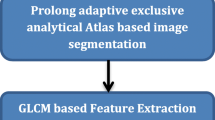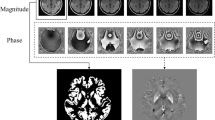Abstract
Volume estimation of brain tissues such as the White Matter, Gray Matter and Cerebrospinal Fluid is an important task in brain image analysis and also used to diagnose neurological and psychiatric disorders. In this work, brain tissue volume reduction is estimated to detect Alzheimer’s disease (AD) using magnetic resonance images. The proposed method initially applies Hue Saturation Value-Based Histogram Thresholding Technique to segment the brain tissue. After that, brain volume is estimated using the pixel counting-based method (PCBM) to detect AD. The proposed method was investigated with images obtained from T1-weighted images of cognitive normal (CN) /normal (N) and AD images from Minimum Interval Resonance Imaging in Alzheimer’s Disease and Alzheimer’s Disease Neuroimaging Initiative and T1- and T2-weighted real-time images collected from a medical diagnostic clinical imaging center. The estimated brain tissue volume between the AD and CN/N brain tissue clearly quantifies the brain tissue reduction and it is compared with existing automatic estimation method statistical parametric mapping (SPM). Comparing to SPM, our PCBM method accurately estimates the brain tissue volumes and can be used as a potential tool to detect AD using MR imaging data.







Similar content being viewed by others
References
ADNIdataset (2016) Available from: http://adni.loni.usc.edu/methods/mrianalysis/adni-standardized-data
Alzheimer’s disease and related dementia’s (2019): https://www.nia.nih.gov
Alzheimer’s Disease (2018): http://www.snmmi.org/AboutSNMMI/Content.aspx?ItemNumber=9870
Anami BS, Unki PH (2014) A fuzzy C-means approach for tissue volume estimation in brain MRI images. Int J Computer Appl, Recent Adv Inf Technol 975:21–24
Ashburner J, Friston KJ (2000) Voxel based morphometry: the methods. NeuroImage 11(6):805–821
Ashburner J, Friston KJ (2005) Unified segmentation. Neuroimage 26:839–851. https://doi.org/10.1016/j.neuroimage.2005.02.018 (PMID: 15955494)
Aslam A, Khan E, and Beg MMS (2015) Improved edge detection algorithm for brain tumor segmentation. In: Second International Symposium on Computer Vision and the Internet (VisionNet), 58: 430–437. Elsevier
Attique M, Gilanie G, Ullah H, Mehmood MS, Naweed MS, Ikram M, Kamran JA, Vitkin A (2012) Colorization and automated segmentation of human T2 MR brain images for characterization of soft tissue. PLoS ONE 7(3):1–13
Brain Atrophy (2018): https://www.healthline.com/health/brain-atrophy#treatment
Bresser JD, Portegies MP, Leemans A, Biessels GJ, Kappelle LJ, Viergever MA (2011) A comparison of MR based segmentation methods for measuring brain atrophy progression. NeuroImage 54(2):760–768. https://doi.org/10.1016/j.neuroimage.2010.09.060
Caponetti L, Castellano G, Corsini V (2017) MR brain image segmentation: a framework to compare different clustering techniques. Information 8:138
Chuwdhury GS, Kkaliluzzaman Md, Mahfuz MdR, Al (2016) Analyzing wavelet and bidimensional empirical mode decomposition of MRI segmentation using fuzzy C-means clustering. Rajshahi Univ J Sci Eng 44:101–112
Clemenson D, Cung S, Kerns M, Quist R, and Rathi H, (2017) What is Alzheimer's disease: https://alzheimersdiseasebiol2095.wordpress.com
Dale AM, Fischl B, Sereno MI (1999) Cortical surface-based analysis: i Segmentation and surface reconstruction. Neuroimage 9(2):179–194
Doherty CP, Fitzsimons M, Holohan T, Mohamed HB, Farrell M, Meredith GE, Staunton H (2000) Accuracy and validity of stereology as a quantitative method for assessment of human temporal lobe volumes acquired my magnetic resonance imaging. Magn Reson Imag 18:1017–1025
Friston KJ, Holmes AP, Worsley KJ, Poline J-P, Frith CD, Frackowiak RSJ (2008) Statistical parametric maps in functional imaging: a general linear approach. Hum Brain Mapp 2(4):189–210. https://doi.org/10.1002/hbm.460020402
Guo C, Ferreira D, Fink K, Westman E, Granberg T (2019) Repeatability and reproducibility of FreeSurfer, FSL-SIENAX and SPM brain volumetric measurements and the effect of lesion filling in multiple sclerosis. Eur Radiol 29:1355–1364. https://doi.org/10.1007/s00330-018-5710-x
Heinen R, Bouvy WH, Mendrik AM, Viergever MA, Biessels GJ, de Bresser J (2016) Robustness of automated methods for brain volume measurements across different MRI field strengths. PLoS One 10:1–16. https://doi.org/10.1371/journal.pone.0165719
Impedovo D, Pirlo G, Vessio G, Angelillo MT (2019) A handwriting-based protocol for assessing neurodegenerative dementia. Cognitive Comput 11(4):576–586
Kalavathi P (2013) Brain tissue segmentation in MR brain images using Otsu’s multiple thresholding technique. Proceeding IEEE ICCSE Conference, 639–642.
Kalavathi P (2014) Computation of brain asymmetry in 2D brain images. Int J Sci Eng Res 5(7):1167–1171
Kalavathi P, and Prasath VBS (2015) Adaptive nonlocal filtering for brain MRI restoration. International Symposium on Signal Processing and Intelligent Recognition Systems (SIRS), Trivandrum, India. Proc. in Springer AISC 425 (eds.: Thampi SM, Bandyopadhyay S, Krishnan S, Li KC, Mosin S, Ma M), 571–580
Kalavathi P, Prasath VBS (2016a) Methods on skull stripping of MRI head scan images - a review. J Digit Imag 29(3):365–379. https://doi.org/10.1007/s10278-015-9847-8
Kalavathi P, Prasath VBS (2016b) Automatic segmentation of cerebral hemispheres in MR human head scans. Int J Imag Syst Technol—Neuroimag Brain Map 26(1):15–23
Kalavathi P, and Priya T (2016) Removal of impulse noise using histogram based localized Wiener filter for MR brain image restoration. IEEE International Conference on Advances in Computer Applications (ICACA), 4–8
Kalavathi P, Priya T (2017) Noise removal in MR brain images using 2D wavelet based bivariate shrinkage method. Global J Pure Appl Math 13(5):77–86
Kalavathi P, and Priya T, (2017a) Segmentation of brain tissue in MR brain image using wavelet based image fusion with clustering techniques, In: Proceedings of National Conference on Computational Methods, Communication Techniques and Informatics, Gandhigram, Dindigul, India. Madurai: Shanlax Publications, 28–33.
Kalavathi P, Priya T (2018) Histogram based multimodal minimum cross entropy thresholding method for magnetic resonance brain tissue segmentation. J Comput Theor Nanosci 15(6/7):2430–2436. https://doi.org/10.1166/jctn.2018.7484
Kalavathi P, Priya T (2018) Brain extraction from MRI human head scans using outlier detection based morphological operation. Int J Computer Sci Eng 6(4):266–273
Kalavathi P, Priya T (2019) HSV based histogram thresholding technique for MRI brain tissue segmentation. In: Marques O, Krishnan S, Li KC, Ciuonzo D, Kolekar M, Thampi S (eds) Advances in signal processing and intelligent recognition systems. Springer CCIS, NY, pp 1–12
Kalavathi P, Arul Annis Chirsty A, Priya T (2017) Detection of alzheimer disease in MR brain images using FFCM method, computational methods communication techniques and informatics. Shanlax Publications, Madurai, pp 140–144
Katuwal GJ, Baum SA, Cahill ND, Dougherty CC, Evans E, Evans DW, Moore GJ, Michael AM (2016) Inter-method discrepancies in brain volume estimation may drive inconsistent findings in autism. Front Neurosci 10:439. https://doi.org/10.3389/fnins.2016.00439
Kavitha AR, Chellamuthu C (2013) Detection of brain tumor from MRI image using modified region growing and neural network. Imag Sci J 61(7):556–567
Keller SS, Roberts N (2009) Measurement of brain volume using MRI: software, techniques, choices and prerequisites. J Anthropol Sci 87:127–151
Klauschen F, Goldman A, Barra V, Meyer-Lindenberg A, Lundervold A (2009) Evaluation of automated brain MR image segmentation and volumetry methods. Hum Brain Mapp 30(4):1310–1327
Kumazawa S, Yoshiura T, Honda H, Toyofuku F, Higashida Y (2010) Partial volume estimation and segmentation of brain tissue based on diffusion tensor MRI. Med Phys 37(4):1482–1490
Lella E, Estrada E (2020) Communicability distance reveals hidden patterns of Alzheimer’s disease. MIT Press J 4:4
MIRIADdataset (2016) Available from: http://miriad.drc.ion.ucl.ac.uk/atrophychallenge
Pratama SHS, Haryanto F (2014) Volume estimation of brain abnormalities in MRI data. AIP Conf Proc 1587:101. https://doi.org/10.1063/1.4866543
Ramaiah NP, and Mohan CK (2011) ROI-based tissue type extraction and volume estimation in 3D brain anatomy. International Conference on Image Information Processing, Shimla, India. IEEE, 1–5. doi:https://doi.org/10.1109/iciip.2011.6108941.
Renjith A, Manjula P, Kumar PM (2015) Brain tumor classification and abnormality detection using neuro-fuzzy technique and Otsu thresholding. J Med Eng Technol 23:1–10
Sargolzaei S, Sargolzaei A, Cabrerizo M, Chen G, Goryawala M, Noei S, Zhou Q, Duara R, Barker W, Adjouadi M (2015) A practical guideline for intracranial volume estimation in patients with alzheimer’s disease. BMC Bioinform 16(Suppl 7):S8. https://doi.org/10.1186/1471-2105-16-s7-s8
SBC Scans (2020) Dindigul, State of Tamilnadu, India
Smith SM, Jenkinson M, Woolrich MW, Beckmann CF, Behrens TE, Johansen-Berg H (2004) Advances in functional and structural MR image analysis and implementation as FSL. NeuroImage 23:S208–S219. https://doi.org/10.1016/j.neuroimage.2004.07.051 (PubMed PMID: 15501092)
Smitha SS, Revathy K, and Chandrasekharan K (2006) Segmentation and volume estimation of brain tissues from MR images. In: Ao SI, Lee JA, Chaudhuri P, Feng DD (eds) Proceedings of the International Multi Conference of Engineers and Computer Scientists, Lecture Notes in Engineering and Computer Science, Hong Kong, China, Newswood Limited. 543–47.
Somasundaram K, Kalavathi P (2011) Skull stripping of MRI head scans based on Chan-Vese active contour model. Int J Know Manage E-learn 3(1):7–14
Somasundram K, Kalavathi P (2011) Medical image binarization using square wave representation. CCIS Springer, Berlin, pp 151–58
Somasundaram K, Kalavathi P (2012a) Analysis of imaging artifacts in MR brain images. Oriental J Comput Sci Technol 5:135–141
Somasundaram K, and Kalavathi P (2012b) Medical image denoising using Non-linear spatial mean filters for edge detection. Proceeding Signal and Image Processing, New Delhi, India, 149-154
Somasundaram K, and Kalavathi P (2012c) A novel skull stripping technique for T1-weighted MRI human head scans. Proceeding ICVGIP Conf, ACM Digital Library 1–8
Somasundaram K, Kalavathi P (2013) Contour-based brain segmentation method for magnetic resonance imaging human head scans. J Comput Assist Tomogr 37(3):353–368. https://doi.org/10.1097/RCT.0b013e3182888256
Somasundaram K, Kalavathi P (2014) Brain segmentation in magnetic resonance human head scans using multi-seeded region growing. Imag Sci J 62:273–284
SPM (2019): https://en.wikibooks.org/wiki/SPM/VBM
Volume of a human brain (2018): https://hypertextbook.com/facts/2001/ViktoriyaShchupak.shtml
Witelson SF, Beresh H, Kigar DL (2006) Intelligence and brain size in 100 postmortem brains: sex, lateralization and age factors. Brain 129(2):386–398
Funding
This study was funded by the Science and Engineering Research Board (SERB), Department of Science and Technology, Government of India. File NO. EEQ/2016/000375 (PK). VBSP is supported by NCATS/NIH grant U2CTR002818, NHLBI/NIH grant U24HL148865, NIAID/NIH grant U01AI150748, Cincinnati Children’s Hospital Medical Center—Advanced Research Council (ARC) Grants 2018–2020, and the Cincinnati Children’s Research Foundation—Center for Pediatric Genomics (CPG) grants 2019–2021.
Author information
Authors and Affiliations
Corresponding author
Ethics declarations
Conflict of interest
The authors declare that they have no conflict of interest.
Ethical approval
This article does not contain any studies with human participants performed by any of the authors.
Additional information
Publisher's Note
Springer Nature remains neutral with regard to jurisdictional claims in published maps and institutional affiliations.
Rights and permissions
About this article
Cite this article
Priya, T., Kalavathi, P., Prasath, V.B.S. et al. Brain tissue volume estimation to detect Alzheimer’s disease in magnetic resonance images. Soft Comput 25, 10007–10017 (2021). https://doi.org/10.1007/s00500-021-05621-8
Published:
Issue Date:
DOI: https://doi.org/10.1007/s00500-021-05621-8




